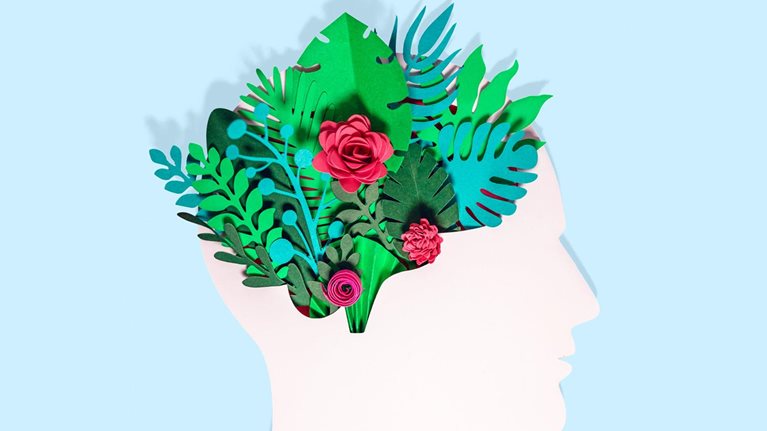In this edition of Author Talks, McKinsey Global Publishing’s Jonathan Rivait chats with Andy Cohen and Diane Hoskins, global cochairs of Gensler, an architecture and design firm, about their new book. In Design for a Radically Changing World (Oro Editions, March 2024), the authors shed light on how design fundamentally affects our everyday lives and offer innovative ways to overcome some of the world’s most pressing issues. An edited version of the conversation follows.
Why did you write this book?
Andy Cohen: We’re in a radically changing world and experiencing wave after wave of crises. To depict this, we coined a term in the book: “the crisis multiplier.” We’ve dealt with these issues heavily over the years—climate change, economic volatility, and geopolitical instability.
Design is the catalyst for massive positive change. In 2023, our firm [Gensler] created designs in over 100 countries. Those designs impacted how millions of people live, work, and play. Design is more than aesthetics; it’s truly about impacting the places and spaces that we live in and go to daily, and those places shape us profoundly.
We believe the book isn’t just for designers, but it’s a call to action for everyone to engage with and appreciate the role that design has in making a difference in the world and in people’s lives.
How can design be implemented for positive social impact?
Diane Hoskins: Anything is possible through design. Design can spark the changes that can make a future that promotes equity, resilience, and well-being.
The book dives into social impact. Not many design books take on that topic, but one of the points we make is that inequity and systemic issues do show up in our built environment. You can see and feel this lack of investment and care for people in certain parts of our cities and rural areas, but we know that design can make a real difference.
How can design act as a ‘hope multiplier’?
Andy Cohen: Design has the power to make people feel optimistic about the future and create lasting positive change in the world. That built environment is where we live, work, play, learn, and connect. It’s where all aspects of the human experience take place.
It’s our belief that design can serve to enhance our experiences and to make our communities more welcoming, accessible, vibrant, healthy, resilient, and inspiring to everyone. That’s why we wrote about the hope multiplier. Much like the crisis multiplier that we discussed before is about these great challenges we’re taking on, the hope multiplier is all about the future of the world.
How can we transform the way we think about design?
Diane Hoskins: First, we need to pivot our thinking about the purpose and role of design.
In the book, we weave in design concepts that everyone should know so a broad conversation can occur. We want to move past the narrow definitions. The goal is to open people’s minds and introduce new ideas. The book presents them as a framework—whether it’s a building, stadium, interior design, or retail space, design concepts are universal.
When we recognize how design can unlock tremendous opportunities to solve critical community needs and issues, we’ll create a better future across our cities and built environments.
How we judge the success of a design project is a part of that broad conversation. A foundational part of transforming how we think about design is asking the question, “How can we use design to create a better human experience?” How can design address the climate crisis? How does it bridge the gap of equity in our communities? How can it promote wellness? We discuss these areas as a framework to help people understand how to connect the dots.
Our final message is that we’re all designers. When we recognize how design can unlock tremendous opportunities to solve critical community needs and issues, we’ll create a better future across our cities and built environments.
How can design make both a global and local impact?
Diane Hoskins: Innovation and the power of design to cultivate human connection requires a balance between understanding a local context and being relevant in that local context. It requires learning the culture, the people, and what drives impact there.
We must see ourselves as a superhighway of knowledge that connects information worldwide. What we’re learning in Europe is relevant as we design something in Chicago that relates to something in Mexico City or the Middle East. The confluence of that knowledge brings best practices, world-class thinking, and the most universal and groundbreaking ideas. Therefore, let’s build it right the first time. Let’s recognize that we don’t only want a car-dominated city, but we want places for people to walk. We want mobility that connects people. We want to learn from what we’ve seen in the past and other areas. We also want to highlight the best ideas of today. How can we connect global knowledge to local relevance and create impactful design solutions that stand the test of time?
How can we reimagine our cities for mixed use and resiliency?
Andy Cohen: For the first time in human history, more people live in cities than not. Currently, 55 percent of the global population lives in cities; by 2050, that number will increase to 70 percent.
In the book, we discuss the “20-minute city.” In a 20-minute city you have access to everything you need, whether it’s a grocery store, [other retail] stores, restaurants, or parks—you have access to it all within a 20-minute walk. Whether you’re in a 20-minute-walkable small city or a big city like New York or London, where there are multiple 20-minute cities, we believe this structure is paramount to the planning process for the future city: creating vibrant, walkable, 24/7 cities.
Additionally, we must think about how to take city streets back for people because there’s an avenue of macro- and micromobility that will happen over the next ten years. Take autonomous vehicles, for example; we’ll see more of those types of cars on our streets in the upcoming years. They’ll provide point-to-point services that, in turn, will free up parking spaces. That free space can be used for green spaces, restaurant spaces, or people spaces. This idea of taking the streets back for walkability is the future for the cities of tomorrow.
What is the biggest opportunity for the future of workspaces?
Diane Hoskins: Right now, there’s a fantastic opportunity to leverage the design of a workspace that optimizes people within an organization. There’s a conversation about the future of work, and it’s one of the most important conversations within our cities because it impacts what’s happening inside the workplace and the balance of office and residential space. Additionally, it goes back to mobility and transportation as people are more aware of the length of their commutes. We ask, “Does the workplace merit the commute?”
As you begin to pull on the thread of the workplace, you start to see how all these things interconnect. Organizations are now charged to step back and use this moment to take everything apart and then put the pieces back together in a way that meets the company’s goals and mission while creating solutions that work best for their employees.
We’ve heard much about “hybrid” work over the past few years, but the conversation is moving beyond that. It’s about how companies invest in redesigning their office spaces so they become a destination for employees, not just because it’s an obligation. How can organizations evolve to meet the continuously changing demands of the workplace? The office isn’t going anywhere, but it’s up to designers and all of us to define how we reshape it. How can we bring new types of spaces into the workplace, and how can it help enable focus?
There are two competing goals: first, it’s the focused, individual part that needs to be quiet, and second, the connection between colleagues. We want to be in the office to connect, in both planned and serendipitous, energized ways. How do we create an experience-multiplier office that’s good for checking off tasks but also for combining and multiplying good things?



